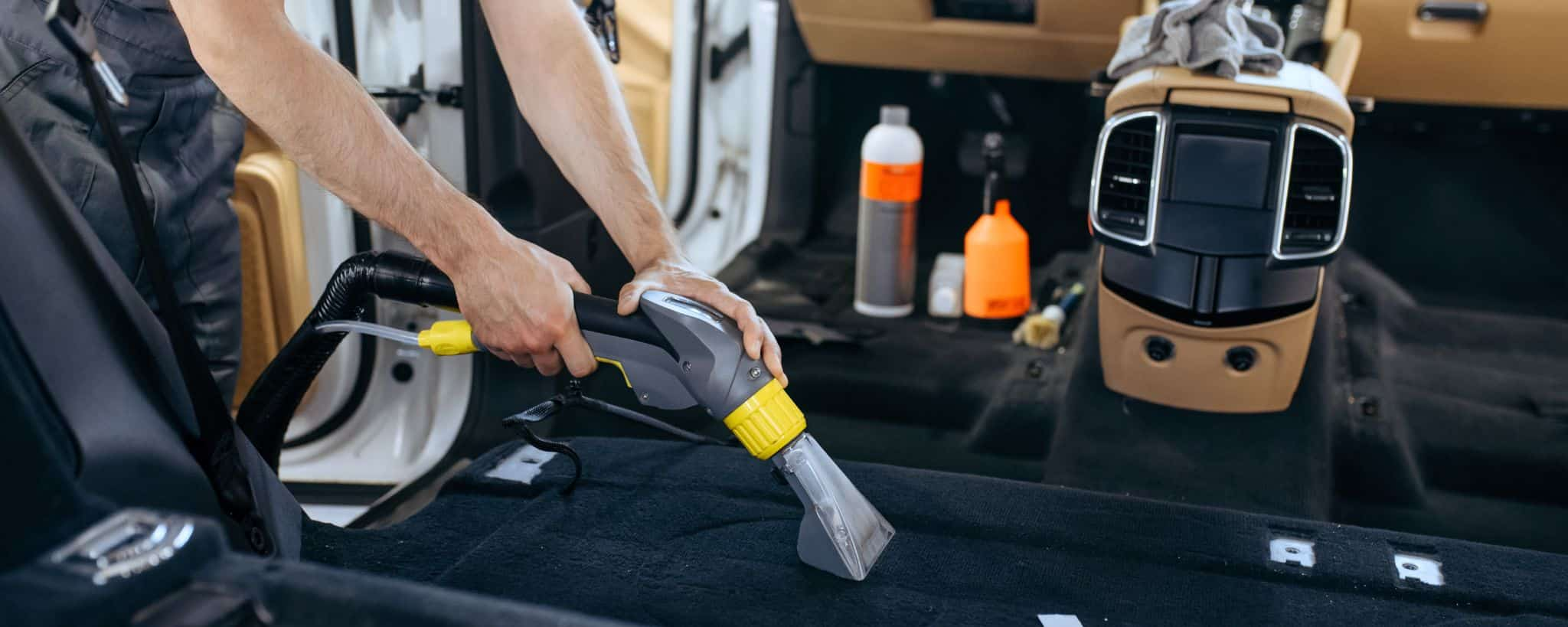Starting a mobile detailing business on a $500 budget is not only possible, it's practical. Many successful detailers today began with minimal equipment and a lot of determination. What matters most is choosing tools that deliver quality work without unnecessary expense.
If you are a beginner trying to set up your detailing van, here’s a helpful guide on setting up under $500.
Is It Possible to Start Mobile Detailing with Just $500?
Absolutely! While professional-level setups can easily cost thousands, a functional and reliable detailing kit under $500 is achievable if you rely on the customer's water and power supply. This saves you hundreds in generator and tank costs, allowing you to focus your investment on tools and chemicals that improve your results.
Your budget must cover tools for both interior and exterior detailing, cleaning agents, and essential accessories. Prioritize what you need based on frequency of use and job.
Can I Use the Customer’s Water Supply?
Many beginners are afraid to ask this, but connecting to a client's garden hose and exterior outlet cuts startup costs significantly. Ensure you have a long extension cord (100 ft) and a three-way adapter to handle varying setups.
Equipment You Need
To stay under budget, each item should serve multiple purposes, last through dozens of jobs while not compromising on quality.
Here’s a breakdown of critical gear organized by task.
Interior Detailing Essentials
- Vacuum: A 4-gallon portable wet/dry vacuum like the RIDGID model (available in stores like Home Depot) includes all attachments needed and retails for around $99. It's reliable and compact, making it ideal for mobile use.
- Brushes: A dual brush set (long and short) from Detail Factory can reach vents, cupholders, and tight seams without scratching surfaces.
- All-Purpose Cleaner: Super Clean Degreaser (1 gallon) is highly concentrated and costs only $10. It handles everything from fabric stains to door panels with proper dilution.
- Spray Bottles: Get two sturdy spray bottles. Color-code them for different chemicals to avoid cross-contamination.
Exterior Detailing Must-Haves
- Pressure Washer: The Ryobi 1600 PSI electric washer is compact and effective. At around $140, it’s one of the most dependable entry-level choices.
- Foam Cannon: The ToDaili foam cannon includes multiple nozzle tips. It attaches to your washer and delivers a rich pre-soak, essential for loosening grime.
- Wash Mitt: A microfiber mitt from Chemical Guys provides a gentle but effective hand wash.
- Wheel Brush Kit: Look for one with both a large wheel face brush and a lug nut detailing brush.
- Tire Dressing: Meguiar’s Hot Shine Tire Coating adds a deep gloss and costs under $7.
Power and Utility Tools
- Extension Cord: A 100-foot indoor/outdoor-rated cord ensures you can access outlets even when tucked behind a client’s house.
- Adapter: A grounded 3-outlet adapter lets you power multiple tools at once.
Microfiber Towels: Sorting By Task
A 36-pack from Sam’s Club or Costco runs under $16. Buy three different colors to assign each for interior, exterior, and glass use. Reserve older or lower-quality towels for door jambs and wheels.
Full Mobile Setup Breakdown Under $500
NOTE: Prices may vary slightly based on location and stores.
How to Organize Your Gear Like a Pro
When I started auto detailing, organizing the equipment was the most difficult part. But when I learned the proper way of organizing the equipment, my job was much easier, with quick transitions between jobs.
I highly recommend using stackable containers and group tools for interior and exterior use. Heavy items like vacuums and buckets should be placed closest to the vehicle’s rear hatch or trunk.
Container Systems
Rubbermaid totes with lids work well for chemicals and towels. Consider labeling each bin by purpose.
Tool Placement by Frequency of Use
Keep frequently used items like spray bottles and towels easily accessible. Less-used gear like the foam cannon can be stored deeper in the loadout.
Weather-Proofing Your Loadout
If you work in variable weather, keep microfiber towels sealed in waterproof bags to prevent contamination.
Detailing Mistakes Beginners Make (And How to Avoid Them)
Using the Wrong Chemical on Leather
Harsh degreasers can dry or discolor leather. Always use diluted APC or a leather-specific cleaner.
Skipping Pre-Rinse and Scratching Paint
Failing to pre-rinse risks dragging abrasive debris across the surface. A foam cannon helps soften contaminants safely.
Cheap Brushes That Damage Surfaces
Low-quality bristles can scratch plastic and gloss black trim. Invest early in a reliable brush set.
Underestimating Extension Cord Length
Many homes have outlets in inconvenient places. So, always opt for a 100-foot cord to avoid delays and customer frustration.
Here’s how to advertise a car detailing business.
Conclusion
Starting with a tight budget forces you to make smarter choices and master the basics before scaling. You’ll learn to optimize each tool, adapt quickly, and deliver quality without overspending. Focus on refining your skills and offering consistent service, and growth will follow naturally.
Your first five jobs with this setup will likely pay back your entire investment. What happens after that is entirely up to you!











